Water-damaged leather presents a unique challenge for repair. If the water is not removed quickly, the leather will become saturated and deteriorate. This article will explain how to remove water from leather and how to repair water damaged leather. You can restore your water-damaged leather to its former glory with a few simple steps. Keep reading to learn more.

Leather is a natural material that is composed of collagen fibers. These fibers are strong and durable, but they are also porous. This means that leather is susceptible to water damage. If the leather becomes wet, it will absorb the water and become saturated. If the leather is not dried quickly, it will break down. Many people think that they can let the leather dry, but this is not the case. If you want to restore your water-damaged leather, you need to take action quickly.
Signs of Water Damaged Leather
One of the most common ways that leather becomes damaged is water exposure. Water can cause the leather to become stiff, discolored, and moldy. If you see any of these signs, it’s crucial to take action immediately to repair the damage.
Discoloration
Water damage will often cause the leather to change color. This can happen almost immediately after exposure or may take a few days to appear. The color change is usually due to the leaching of dyes from the leather.
Stiffness
If the leather feels stiff or brittle, this is another sign that it has been damaged by water. This stiffness is caused by the leather’s loss of natural oils and waxes.
Mold or Mildew
If you see mold or mildew on the leather, this is a sign of severe water damage. Mold and mildew will cause the leather to degrade and become weak. If you see mold or mildew, it’s essential to take action immediately to clean it off and repair the damage.
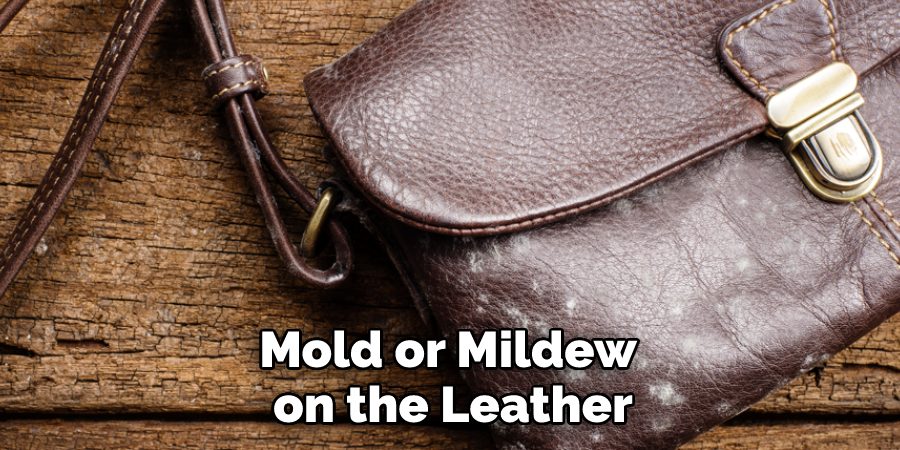
Cracked and Hard Leather
If your leather has been water damaged, it will likely become hard and cracked. This is especially true if the leather was not treated with a water-repellant before it became wet. While you can’t repair the damage that has already been done, you can prevent further damage by applying a water repellant to the leather. You can also use a leather conditioner to help keep the leather soft and pliable.
How Sensitive Is Leather to Water?
Leather is a durable and water-resistant material, but it is not entirely waterproof. Water can cause the leather to swell, soften, and discolor. Leather can also become stiff and brittle when exposed to water. In general, leather is best kept away from moisture whenever possible. If the leather does get wet, it should be allowed to air dry naturally at room temperature.
Direct sunlight and heat sources should be avoided, as they can further damage the leather. Once the leather is dry, it can be treated with a conditioner to help restore its suppleness and strength. With proper care, leather can last for many years without showing signs of wear. However, exposure to water can significantly shorten its lifespan.
How to Repair Water Damaged Leather Detailed Guide
Step 1: Let The Water Dry On Your Leather
Assuming that you acted quickly and could remove the leather item from the water source before it was completely soaked, the first step is to let the water dry on your leather. DO NOT try to hasten this drying process by using a hairdryer or other household appliance. The heat will only serve to damage the leather further. Leather is a natural material, and as such, it needs to be allowed to dry out slowly and naturally.
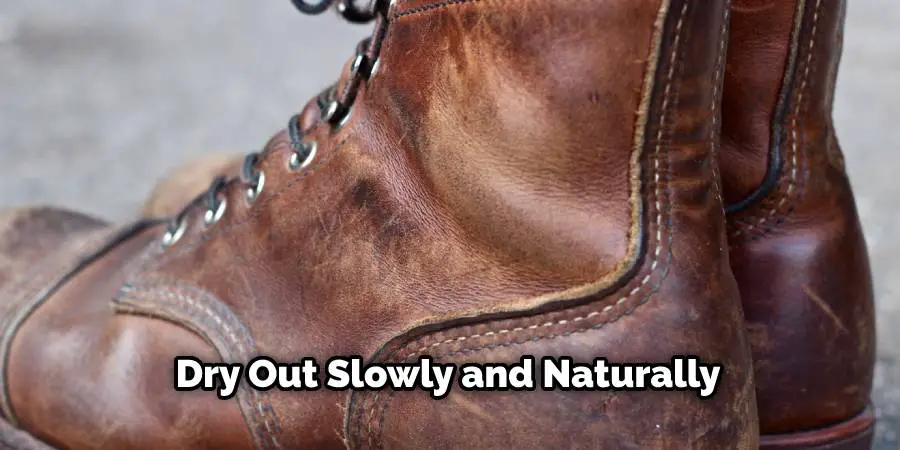
Step 2: Treat The Mold And Mildew
If you could not remove the leather item from the water source in time, then it is likely that mold and mildew have set in. In this case, you will need to treat the mold and mildew before proceeding with any repair work.
Mold and mildew can be treated with several household products, including vinegar, hydrogen peroxide, and bleach. However, it is essential to note that these products can also damage leather if they are not used correctly. Therefore, it is always best to consult a professional before using any chemical on your leather.
Step 3: Clean The Leather
Once the mold and mildew have been treated, you will need to clean the leather. This can be done with several different household products, including saddle soap, vinegar, and lemon juice. However, it is essential to note that these products can also damage leather if they are not used correctly. Therefore, it is always best to consult a professional before using any chemical on your leather.
Step 4: Condition The Leather
The number one reason to condition your leather is to keep it from drying out and cracking. All leather will slowly dry out over time, no matter how often you use it or what care you give. It becomes more brittle when your leather dries out and is susceptible to tearing and scuffing. By keeping your leather conditioned, you help it retain its flexibility, which allows it last longer. Additionally, conditioning your leather can help restore some of its natural oils, giving it a healthy shine.
There are many different leather conditioners on the market, so choose one right for your needs. If you’re not sure which type to get, ask a salesperson at a leather goods store for help.
To condition your leather, apply the conditioner to a clean, dry cloth and rub it into the leather in a circular motion. Be sure to pay special attention to any dry or cracked areas. Once evenly applied the conditioner buff the leather with a clean, dry cloth to remove any excess.
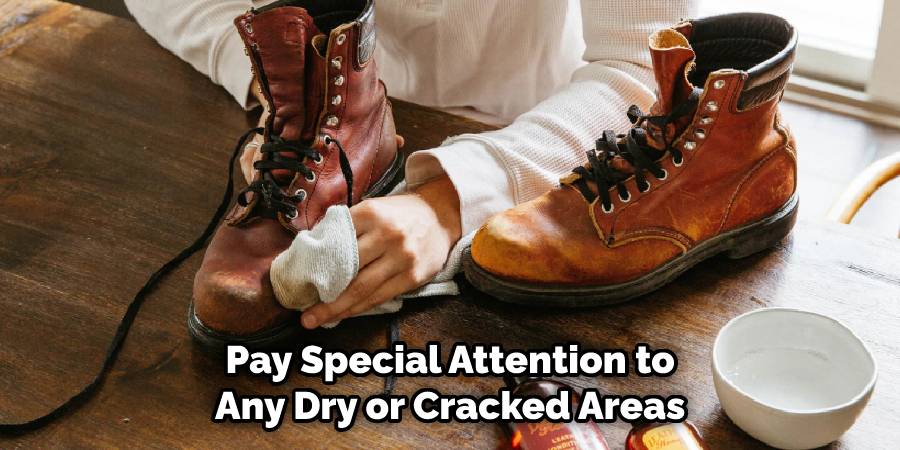
Step 5: Repair The Damage
Once you have cleaned and conditioned your leather, it will be time to repair any damage that has been done.
If your leather is cracked, you can use a leather repair kit to fill in the cracks. These kits have everything you need to do the job, including color-matched filler and tools. Follow the instructions included with the equipment to repair your leather.
If your leather is ripped or torn, you will need to patch the holes. You can do this by cutting a piece of leather from an old jacket or furniture that you no longer want. Once you have a piece of matching leather, glue it over the hole and allow it to dry overnight. In the morning, sand the patch’s edges until it is flush with the leather. Finally, apply a thin layer of leather conditioner to help blend the patch into the leather.
If your leather is stained, you can try to remove the stain with several different household products, including vinegar, lemon juice, and saddle soap. However, it is essential to note that these products can also damage leather if they are not used correctly. Therefore, it is always best to consult a professional before using any chemical on your leather.
No matter what type of damage your leather has sustained, it is essential to remember that repairs should be done as soon as possible. The longer you wait to repair damaged leather, the more difficult it will be to fix.
Step 6: Protect The Leather
Once you have repaired your leather, it is essential to take steps to protect it from further damage.
If your leather is exposed to sunlight, heat, or excessive moisture, it can become dry and cracked. To help prevent this from happening, apply a leather protectant every six months. This will create a barrier that will help keep your leather looking new for years to come.
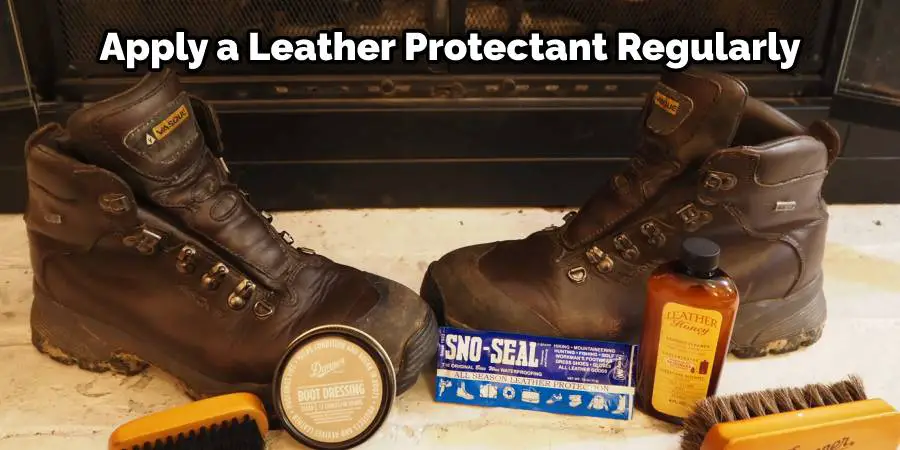
You should also avoid exposing your leather to extreme temperatures. If you must store your leather in a hot or cold environment, be sure to wrap it in a breathable material, such as cotton.
By taking proper care of your leather, you can ensure that it will last for many years. In addition, these steps will help in how to repair water damaged leather.
Essential Tips to Remember If Water Damage Does Occur
Water damage is one of the most common and costly problems leather goods owners face. Whether your favorite handbag has been caught in a rainstorm or your couch was soaked by a leaky roof, water can cause severe damage to the leather.
While it may not be possible to prevent all instances of water damage, there are some steps you can take to protect your leather goods from this type of damage. Here are some essential tips to remember:
- Avoid exposing leather to direct sunlight or heat sources. Leather can dry out and crack when exposed to these elements for extended periods.
- Blot the excess moisture with a clean, absorbent cloth if the leather gets wet. Do not rub the leather, as this can cause further damage.
- If possible, air dry wet leather in a well-ventilated room. Avoid using a hairdryer or other heat source to speed up the drying process, as this can cause the leather to shrink or crack.
- If water damage has occurred, it is vital to take action immediately. The longer you wait, the more difficult it will be to repair the damage.
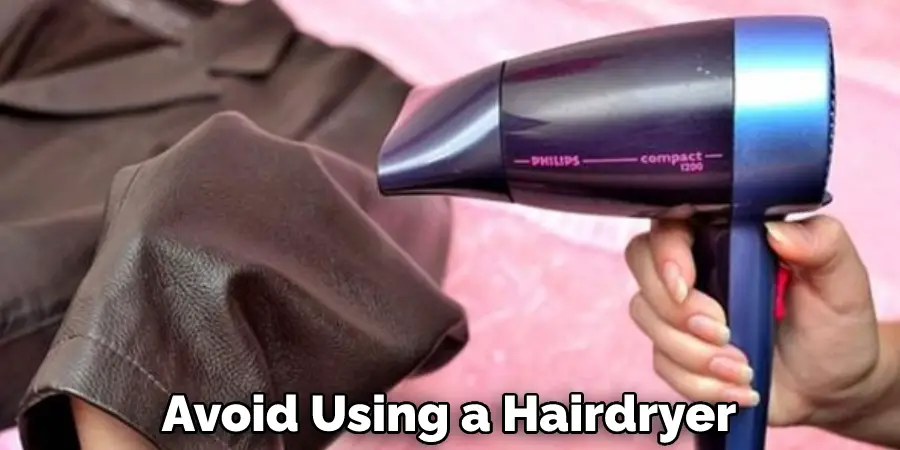
Frequently Asked Questions
Does Water Permanently Damage Leather?
The damage that water can do to leather will depend on a variety of factors, including the type of leather, the amount of water that is applied, and the climate in which the leather is used. In general, however, water can cause the leather to become brittle and lose its elasticity, making it difficult, if not impossible, to wear or maintain. If you are concerned that your leather items may be damaged by water, it is best to consult a professional leather care specialist.
What Does Water Damage on Leather Look Like?
Water damage on leather can be difficult to identify, but it is typically characterized by the presence of mold and brown patches. Mold Growth: Mold growth is a sign that water has reached high levels in the environment and could eventually cause structural damage. Brown Patches: Brown patches are caused by moisture absorbing into the skin which then turns dark due to melanin production.
Can You Restore Water-damaged Leather?
Yes, you can restore water-damaged leather with a little bit of time and patience. The first step is to remove all the dirt, dust, and debris that has been settling on the surface of the leather over time. Once this is done, gently wet your skinned area with lukewarm water and some soap. Apply pressure while scrubbing until all the dirt is gone. After washing off the soap residue, rinse your surface again with clean water until it’s completely clear. Finally dry off your leather thoroughly before applying any type of finishing product or sealant. By following these simple steps, you should be able to restore most water-damaged leathers back to their original condition!
How Do You Soften Water-damaged Leather?
Water damage to leather can occur extremely quickly. There are various methods that you can use to soften water-damaged leather, including using salt, milk of magnesia (MOM), or apple cider vinegar.
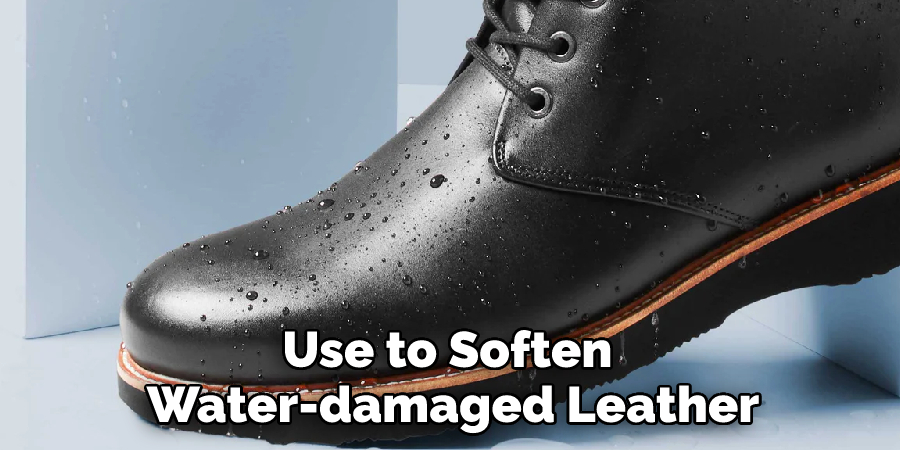
Salt will naturally expel residual moisture and help in the repair process by drawing out additional oil and grease. MOM is a common household product used for softening clay soils, and it has been shown to be effective in the removal of oils, waxes, fats, greases, and alkalis/salts from all kinds of wet surfaces. Apple cider vinegar also has properties that make it an excellent choice for softening leather; it helps break down surface defenses while absorbing odors.
Any one of these methods may work well on your particular case; just be sure to test them first before applying them heavily because overuse could result in damage or even mutation!
Conclusion
Water-damaged leather can seem like a daunting task to repair, but it can be done with the right tools and some patience. We’ve outlined the steps you need to take on how to repair water damaged leather, so follow these instructions closely, and your piece of furniture or accessory will look good as new in no time.

